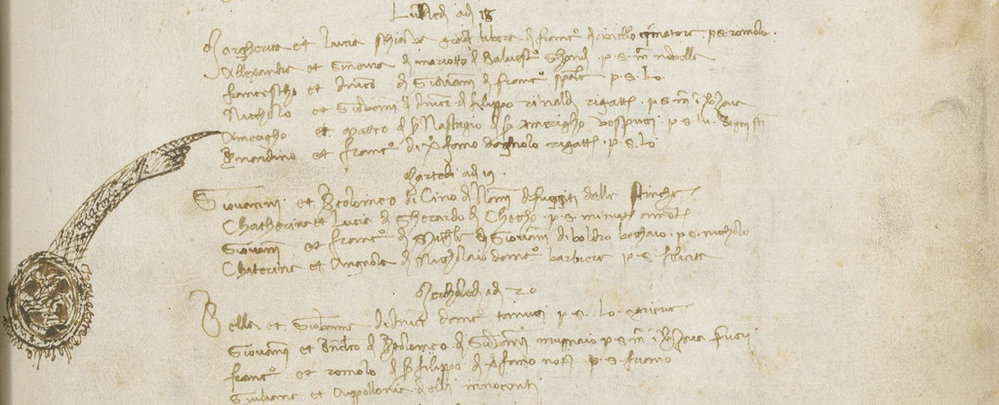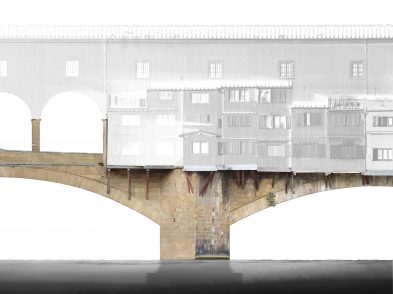Florence’s baptismal records from 1450 to the twentieth century can now be consulted online.

Housed in the Opera di Santa Maria del Fiore Archive, the ledgers are an irreplaceable source of information to establish birth dates, family relations and the addresses of Florentines across four and a half centuries. Illustrious figures whose details are contained in the baptismal records include Amerigo Vespucci (baptized on March 18, 1454); Niccolò Machiavelli (May 4, 1469); Lisa Gherardini, supposedly the woman depicted in Leonardo da Vinci’s Monna Lisa (June 15, 1479); Cosimo I de’ Medici (June 20, 1519, who was baptized eight days after his birth); Antonio Meucci (April 14, 1808), inventor of the telephone; former Italian prime minister, Bettino Ricasoli (March 10, 1809); and the creator of Pinocchio, Carlo Lorenzini “Collodi” (November 25, 1826).
Up until the early twentieth century, if you were born in Florence, you were baptized at the Baptistery in piazza Duomo. However, it was only with the Council of Trent’s Decretum de reformatione matrimonii of November 11, 1563, that it became a requirement for churches to maintain baptismal records. In Florence, this had already been common practice since 1429, with the cathedral’s governing body housing baptismal records dating to 1450.
“For many centuries prior to 1450, baptisms had always taken place in the Baptistery, but no records were kept,” explains Lorenzo Fabbri, who manages the cathedral archives. “We do know, however, that at least since the early 1300s, the parson of San Giovanni kept count of the number of baptisms according to gender by putting a black bean for each boy and a white one for each girl in two basins. No traces remain about these figures, other than in Giovanni Villani’s chronicles.”
Twenty years have passed since the cathedral first published the archive online. The new version is dramatically different with better resolution images to enable improved consultation. The records are accompanied by introductory texts that provide users with historical context.






